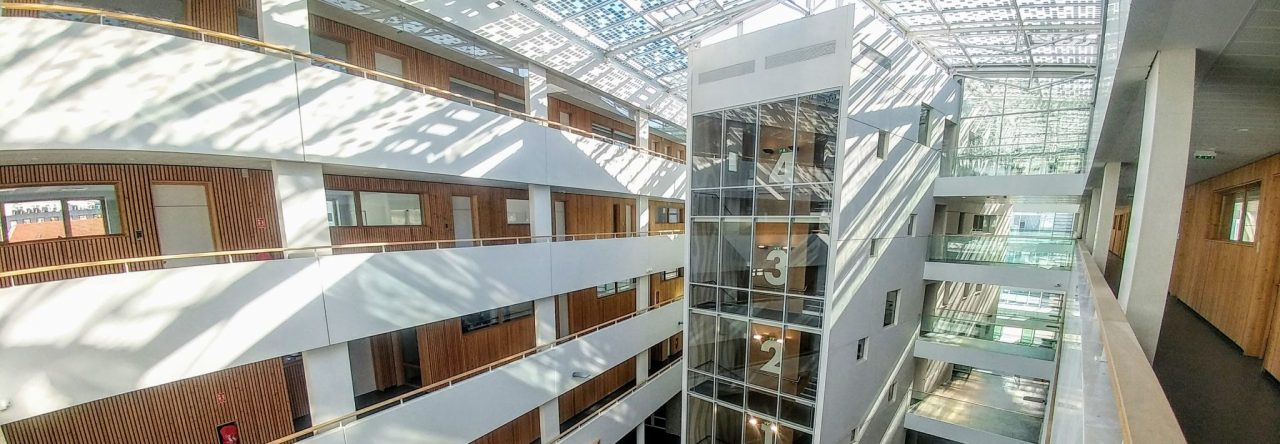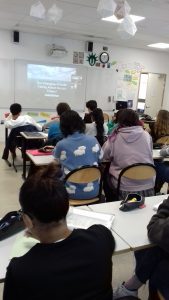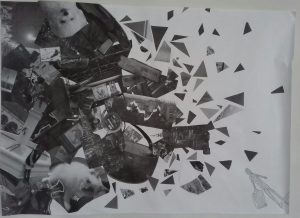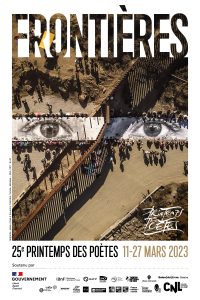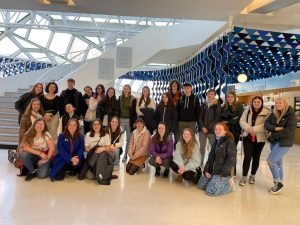
“Flash Collection”, a travelling exhibition came to Lucie Aubrac, to inspire the international class. On the morning of Tuesday the 14th of March 2023, the students of 2nd8 were joined by a lovely frac employee who introduced six works of art in an unexpected fashion. We discussed still art, performing art, and what art means to us. We also learned about the frac organization. So what is the frac? It is the acronym for Fonds Régionaux d’Art Contemporain, a public collection created in 1982 by Jack Lang. There are twenty-three Frac in France, one per region. Since 2013, the Frac collection holds 26 000 works of art made by 4 200 artists that come from all over the world. But what are the real missions of a Frac? The collections aim to build a heritage of contemporary art, support the creation of emerging artists, give visibility, and raise awareness of the public, especially the younger generations. They have numerous partners to realize and finance this wonderful project.
« Flash collection » is a project specially designed in 2016 for high school students in Ile-de-France. Indeed, the designer Olivier Vadrot has created a flight case that contains multiple works of contemporary art from the collection of the Frac which stands for Regional Fund for Contemporary Art.
The aim of this project is to teach and introduce the world of contemporary art to high school students in the Ile-de-France region in a fun way. Not all Ile-de-France residents have equal access to artistic knowledge. The Flash Collection flight case contains a small selection of contemporary works, and allows for a different approach to art, one that is much more interactive. Students have direct access to the different works of art, introduced by a person specialized in them. This allows the students to have a guide who is present to answer all our questions, to expose students to artistic works and talk to us about the works that have been pre-selected.
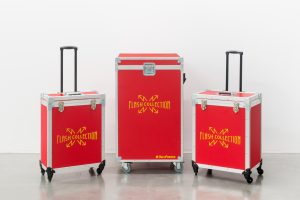
Mallette Flash Collection
The works in the « flash collection » were transported in a flight case, usually associated with the world of entertainment. The design of the flight, used to safely transport the various works, has a meaning: the red and yellow flight case is reminiscent of the film « Flash », following the adventures of a fast car. The whole notion of speed is thus taken up by the design of the box. In addition, the name « flash collection » suggests something temporary and provisional. When the lady presented the different works of art, they were in boxes that are typically associated with magic. All these colours and this process of discovering a work is used to make the collection accessible to as many people as possible and is a fun and interactive experience.
The 2e8 students were introduced to various art works by Magalie, a FRAC employee. Firstly, they discovered John Stezaker’s collage made in 2007. In this piece of art, the artist used a picture from a scene of a black and white film in which a dying man lies on a bed surrounded by other people. On top of the picture, Stezaker layered the picture of the landscape of a lake that seems to be the continuity of the lying man. Another art work that was presented to the Seconde was “Dinner in the pool”, a photograph by Bill Owens taken in 1980. Initially a photographer for a Californian magazine, Owens enjoyed taking pictures of typically American everyday of the working classes in the late 60s. Lastly the students spent the most time discussing Veronique Jourmard’s sculpture entitled “Horloge” made in 2001. It is a ready-made, which in art is the process of by which an artist appropriates a manufactured object and deprives it of its basic function to turn it into a piece of art. The original clock came from Japan and was transformed by the artist herself. She removed the hour hand and the minute hand to only keep the second hand and painted it in red. This sculpture represents vanity as it emphasizes the seconds going so fast and time flying by. Some students felt anxious looking at the clock. It created a lot of discussion about how time is limited and how we spend our lives. Even though it is common knowledge this helped the students realize that they needed to enjoy every second of their lives because they are not eternal.
The Urinal is a ready-made sculptor by Marcel Duchamp, presented for the first time in 1917. The piece of art is a public urinal upside down and signed “R. Mutt”. It was the most controversial work of art of the 20th century as it had an impact on an entire era of art. This simple piece of art hides a whole story. Marcel Duchamp was a member of the Society of Independent Artists (SIA) when he decided to present The Urinal anonymously to the jury with a fake name for it to be exhibited. However, his public urinal was refused because “its place is not in an art exhibition and it is not a work of art, according to any definition”. When Duchamp learned this, he left the SIA without revealing his link to the yet unknown artist, “Richard Mutt”. Obviously, this story stirred up heated debates about what should and could be considered art. His friend Alfred Stieglitz took a photo of it and published it for the journal The Blind Men. A little after this, he put The Fountain in his New York gallery. It was stolen, broken, lost, destroyed but despite all, this work of art has really overturned the codes and is a perfect example of contemporary art.
The next day the class met and discussed what we appreciated and how some of our opinions differed. Everyone shared their views about the works they had seen. We then asked ourselves about the presence of art in our society (whether it is useful or not) and questions that we thought were useful to ask when we observe a work of art.
In the end, the whole class agreed that the « flash collection » was a good idea to bring art into the daily lives of high school students.

